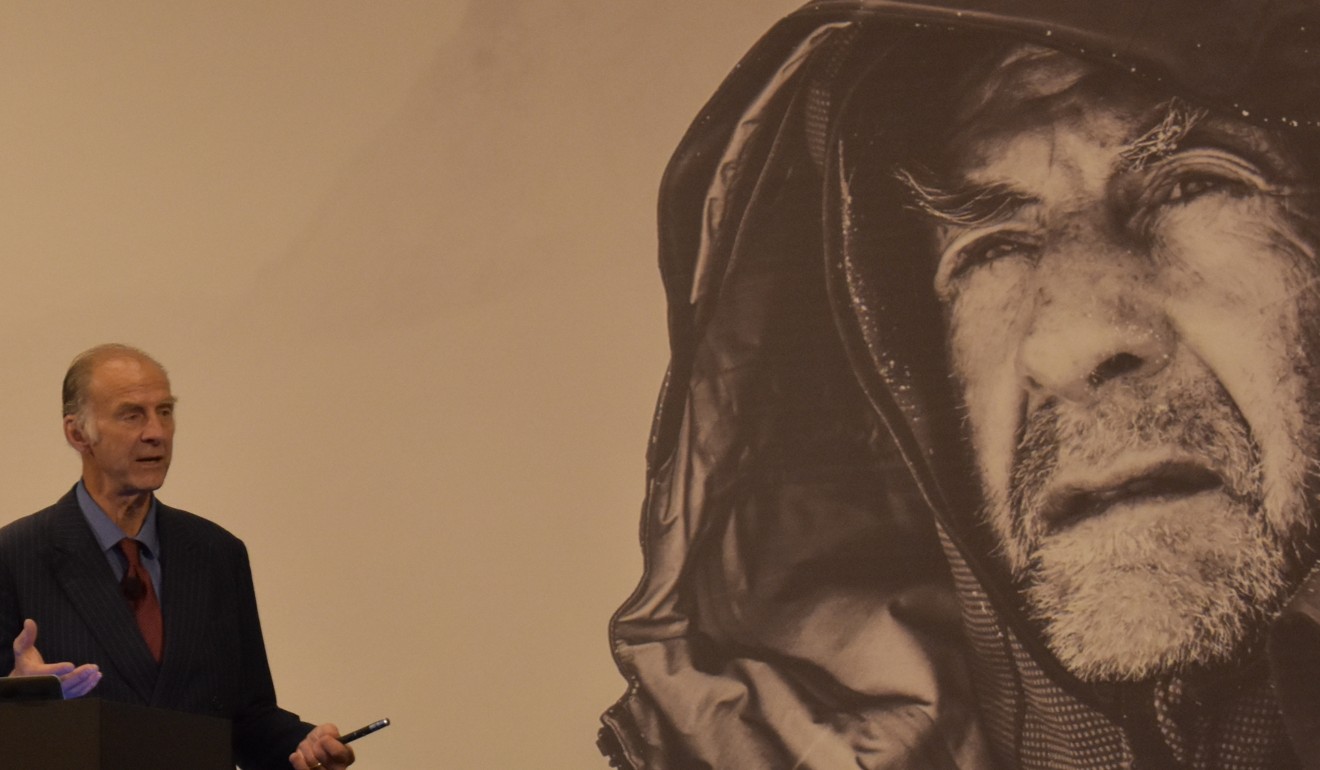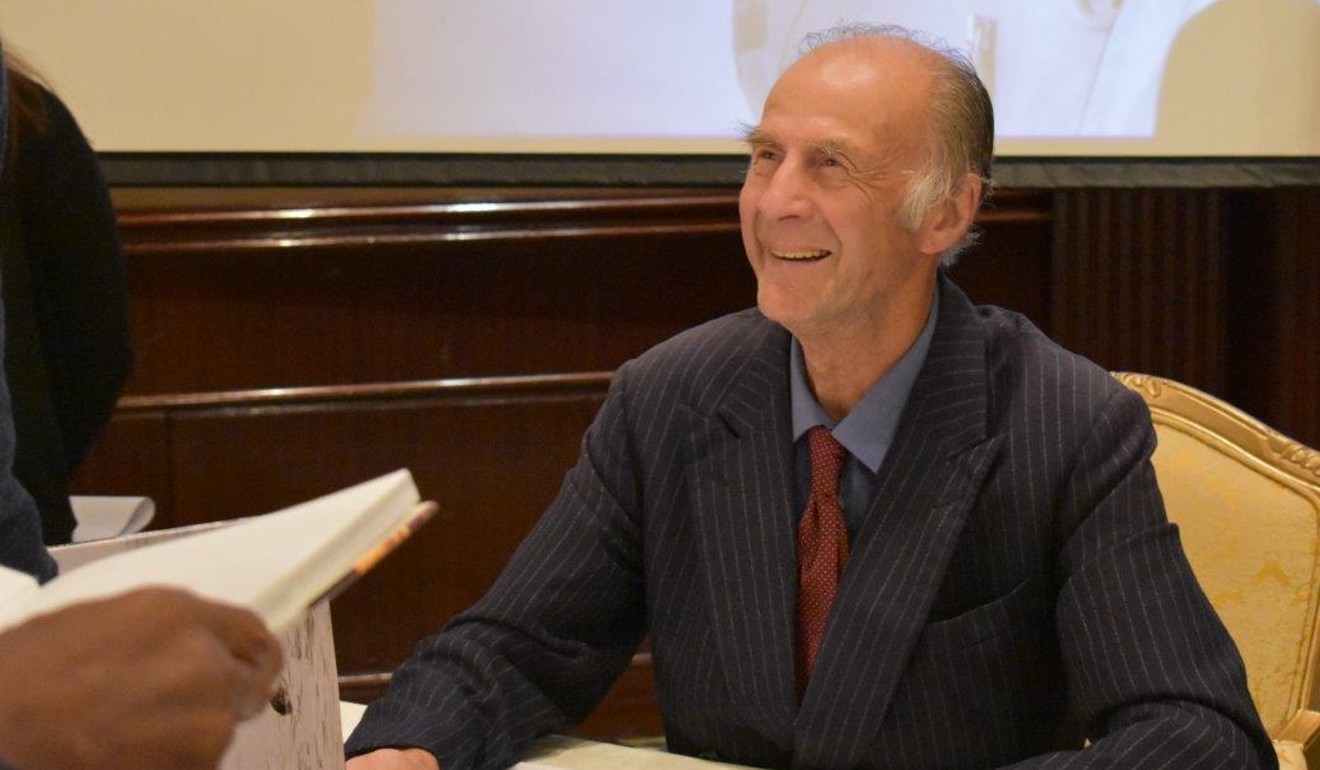
He’s walked the Antarctic, climbed Mount Everest and chopped off his own frostbitten fingers – but for explorer Ranulph Fiennes, taking photos is the hardest part of the job
‘The World’s Greatest Living Explorer’ is in his seventies, but still determined to cross Antarctica in winter. He sat down with the Post to recall some of his most epic adventures
Ranulph Fiennes has walked from pole to pole, crossed the Antarctic unsupported, discovered a lost city in the desert, climbed Mount Everest at 65, and chopped off his own frostbitten fingers, but the ‘World’s Greatest Living Explorer’ still reckons taking photos is the hardest part of his job.
Now in his seventies, Fiennes is showing no signs of slowing down, having become the first man to travel pole to pole over land with friend Charlie Burton, the first to travel the entire Northwest Passage in one summer and the first to complete an unsupported crossing of the Antarctic on foot with fellow explorer Mike Stroud, enduring immense cold, frostbite and “crotch rot”.
His fingers became so frostbitten after a solo crossing of the Arctic attempt in 2000, he cut them off in his garden shed when he came home to avoid the surgery bill, and the Guinness World Records crowned him “the greatest” as long ago as 1984.
But exploring is expensive. Sponsors want their logos photographed against epic backgrounds, which is not often straightforward when survival is the first priority.

“It was a huge job,” Fiennes tells the Post of his 1979 pole-to-pole adventure, the Transglobe Expedition.
The “job” almost cost one member his ability to walk after a misadventure with the camera.
One sponsor had donated bananas but by the time they arrived in Cape Town, they were too black to photograph.
“So he cleverly got an eight-foot blow-up banana on a lead,” Fiennes recalls – but it blew into a penguin colony, forcing the would-be photographer to chase after it in a lifeboat before finally getting the picture.
“They were making their way back very pleased with themselves having taken a lovely photograph,” adds Fiennes.
“But the propeller shaft wrapped around the bottom of his trousers and ripped them off, and his big belt broke his leg in 88 places.
The injured man spent a year in Cape Town having his leg reset.
“By the time we’d eventually crossed the Antarctic he’d rejoined the ship and one of his legs was longer than the other.”

Another time, Oliver Shepard, who accompanied Fiennes and Burton over Antarctica, sent a message to the wrong sponsor – a provider of sanitary products for female members of the crew.
“We will take pictures of the products against colourful backgrounds,” read the message, much to the amusement of the crew and confusion of the company.
The Transglobe Expedition from 1979 to 1982 put Fiennes on the map as one of the great explorers.
He began exploring to make money. He had no academic qualifications and was kicked out of the SAS for a series of misdemeanours, including attempting to blow up a concrete dam built for a film which he felt was marring the beauty of a local village.
Hoping initially to make a living from lectures and book sales on the back of his adventures, other motivational factors soon came into play.

First was competition with the Norwegians, who he calls “the enemy”, as they have an impressive record in polar regions. Scientific discovery and charity fundraising also became important.
The Transglobe Expedition was his late wife Ginny’s idea. Fiennes suspected she looked at their polar achievements and saw the Norwegians held all of the records.
“When you outdo them,” he says, “you have to make it really hard because they are the best.”
Fiennes has raised almost £19 million (HK$199.5 million) for good causes, but it took him a while – and a tap on the shoulder from Prince Charles – to realise exploring and fundraising could go together.
“Back in the 70s, we didn’t see the link between charity and expeditions,” he says.
The prince had been labouring under a mistaken assumption: “I’ve been patron of all these expeditions for all these years because I thought you were raising money for charity!” he told Fiennes, before suggesting multiple sclerosis would be a good cause to support on his next trip. Since then there’s always a charity element.

After so many “firsts” there would seem to be few challenges left, but the 73-year-old still has his eye on one.
“The next big first, which will be very difficult for anyone to do, is to cross Antarctica in the polar winter,” he says.
The first obstacle is getting permission. There are no rescue facilities, such as ski planes, available during the long dark winter, so no nation grants its citizens permission to go.
In 2013, Fiennes tried to find a loophole that would allow him to attempt it. They delivered two Caterpillar machines to the Antarctic on an ice-breaker.
“We made houses to be towed by the Caterpillars, including an operating theatre. We thought we were very clever,” he says – but the vehicles’ proved too heavy for hidden crevasses and the trip was abandoned soon after they set out.
Watch: Fiennes circumnavigated the globe with Charlie Burton
For young explorers, Fiennes suggests joining an organisation – such as the Royal Geographical Society, at whose Hong Kong branch he gave a talk this week.
He warns that for up-and-coming explorers, the hardest part is finding sponsorship.
“You don’t just want a sponsor, you want a good sponsor. In the case of the latest expedition, TMF [a professional services firm] are interested, they get to know all about it, they are helpful with answering questions,” he says, talking about his ongoing mission to climb the seven highest summits on the seven continents.
The second challenge is picking teams. Fiennes said that he has always found people of faith, any faith, are able to fight off the nagging feeling to give up.
For Fiennes, it’s imagining of his late father and grandfather watching him that forces him not to give up and let them down.
“When [people’s] physical side burns out and they start fighting the mental battle, their faith kicks in,” he says.
“They have crotch rot and gangrene, they then find a wimpish voice telling them they can’t get going.
“The ones who can fight that wimpish voice best are the ones with faith.”

